Article from the section “Calendar of work for gardeners and vegetable gardeners”
In order for trees and berry bushes to lay more flower buds for next year’s harvest, you need to work hard with them in August: water them in a timely manner, give phosphorus and potassium supplements, and protect them from pests.
Summer is ending, but there is more work to do in the garden
Your garden: work of the month.
In August, fruit trees lay down next year's harvest. At this time they need feeding with phosphorus and potassium. So, in mid-August, stone fruit trees are fed as follows.
For cherries, apricots, plums - 2 tbsp. spoons of double superphosphate, 1 tbsp. spoon of potassium sulfate in a bucket of water. Under each tree, along the projection of the crown, 4 buckets of this solution are poured and a liter jar of ash is added over the damp soil.
At the end of summer, leaf spots and coccomycosis can develop on cherries, cherries, and dukes, in which most of the leaves turn yellow and fall off. You can treat with a 1% Bordeaux mixture or Abiga-Pik.
What work should be done with apple trees
If there are a lot of Californian scale insects on the apple trees (red dots on the fruits), spray them with fufanon-nova (13 ml per 10 liters of water) in early August. Do not leave carrion under the trees overnight; collect it regularly, otherwise the caterpillars will leave the fruits and crawl into the trees.
You can apply autumn complex fertilizer to apple and pear trees.
An effective fertilizer is AVA fertilizer. It is applied once every three years into a groove along the perimeter of the crown: 3 tbsp. spoons for apple trees, 2.5 tbsp. spoons for pears.
Apply dry to a depth of 5-8 cm and sprinkle with earth on top. It is absorbed gradually over three years, is not carried away by water, and is not buried in the soil.
Hot summers (including August) contribute to the formation of the third generation of the codling moth, which is dangerous for late varieties of apple trees.
Against it, you can spray the trees with biological products - lepidocide or bitoxybacillin, repeating after 10-14 days. Their waiting period is 5 days. If you use the biological product Fitoverm, one treatment is enough, the waiting period is 2 days.
All three drugs are also effective against a range of other pests, including aphids on red currants.
Instead of biological products, in August you can use fufanon-nova and other chemical insecticides.
In early August, sow mustard, preferably white, under the pear and apple trees. After 1.5-2 months it can be buried in the ground. This is a good organic fertilizer; in addition, mustard will rid the soil of diseases and pests. 500 grams are sown per hundred square meters. mustard seeds.
What to do with strawberries
First of all, clear the fruit-bearing plantation of weeds, water, loosen the soil, and feed the plants. At the beginning of August, apply 5-10 g per square meter. m of urea, at the end of the month - 10-15 g of superphosphate and 5-10 g of potassium sulfate.
This is necessary for growing foliage and laying fruit buds. Strawberries should go into winter stronger.
Monitor the condition of the plants. If leaf spots or strawberry mites appear, treat with pesticides: fufanon-nova + abiga-pik.
Plant strawberries at the end of August. Use the strongest rosettes on your mustache - the first and second. Water all newly planted strawberry rosettes in the morning or evening every other day and shade them from direct sunlight.
Remove 4-year-old strawberry bushes of one-time fruiting. Before planting, plant roots are immersed for 1-2 hours in a solution of phytosporin (2-3 g per liter of water), potassium humate.
The first feeding of strawberries is carried out two weeks after planting with urea - 20 g + 30 g of superphosphate and 15 g of potassium fertilizer per square meter. m. This feeding is necessary for increasing leaf mass and for future fruiting.
If the renewal and development of the leaf apparatus is weak, feed with complex fertilizer - diammofoska or azofoska.
At the same time, destroy weeds and tendrils.
Don't forget about raspberries
Raspberries are fed with double superphosphate (1 tbsp) + 1 tbsp. spoon of potassium sulfate, diluted in 10 liters of water, and water 1 liter for each bush or 1 linear meter of strip planting.
After cutting out the fruit-bearing stems, spray the raspberries with zircon (dosage - on the package). Also, at the end of summer, black and red currants are fed to strengthen immunity and increase resistance to diseases.
Inspect annual raspberry shoots. Cut out the stem gall midge affected areas (swellings on the shoots) to the base and burn them. Remove excess growth. Leave 2-4 shoots per bush.
Against spider mites on raspberries (on the upper side the leaves become pale, light, with small white spots, on the lower side - with cobwebs), treat the leaves infested with the mite with fufanon-nova after removing the mites.
Against spotting of raspberry shoots and leaves (anthracnose, canker spot and purple spot) after pruning and removing fruit-bearing shoots, remove diseased annual shoots and spray the plants with 1% Bordeaux mixture or its substitutes.
Promptly cull and burn virus-affected shoots (mosaics, yellow netted raspberries, curls). When aphids appear, spray raspberry bushes with fufanon-nova, since viruses are transmitted by aphids.
Keep the soil in the raspberry garden moist, because... Raspberry roots are superficial.
Pinch off the tops of young shoots left for next year's harvest. Water and fertilize with organic matter and phosphorus-potassium fertilizers.
Read more about raspberries in the article: "Raspberries in autumn."
Getting ready for autumn planting
In August, you need to prepare holes for planting trees in the second ten days of October and berry bushes at the end of September.
On loamy soil, the diameter of the hole should be 120 cm, the depth - 60 cm, of which 40 are the hole and 20 are loosened (fertile soil layer, then fertilizers mixed with the soil.)
For berry bushes, the diameter of the hole is 70 cm, the depth is 50 cm (30 is the hole, 20 is the loosened layer).
They don’t dig a hole under the raspberries, but loosen the soil with 1.5 shovels.
When planting trees, add an average of rotted manure into the hole - 2-3 buckets (depending on the soil) or compost - 4-5 buckets, superphosphate - 0.5 kg, wood ash - 0.5 kg. For shrubs these standards are halved.
For currants, increase the amount of ash to 0.8 kg. Mineral fertilizers are poured onto the bottom
holes, and organic matter - closer to the roots and must be mixed with the soil.
Do some summer pruning
To maintain the small size of the crown of fruit-bearing trees, prune.
To stop the growth of strong annual growths 40-50 cm long or more, especially when young trees are forming, pinching is carried out in mid-August - pinching the tops of shoots with 2-3 upper leaves, leaving at least 4-5 leaves.
Cut out all vertical shoots at the top of the crown. Do not trim the lower part of the crown.
Currants and gooseberries
Currants and gooseberries can be pruned for lightening.
Gooseberry. Immediately after harvesting, remove old fruit-bearing branches, as well as excess, thickening shoots.
This pruning can be continued throughout the fall, until the onset of severe frosts. And in the spring, do detailed pruning.
Red Ribes. At the beginning of August, annual shoots of the current year are pinched.As a result, by autumn many flower buds are formed. Two-year-old branches begin to bear fruit, and the berries increase in size.
It's time to check the condition of the storage facilities and prepare them for planting a new crop. Thoroughly clean the premises of debris, ventilate well, dry, whitewash with slaked lime (1.5-2 kg of lime per 10 liters of water) with the addition of copper sulfate (from 150-200 g to 500 g). Dry the premises again. If necessary, repair the container or purchase a new one.
What to do in the garden in August
Your garden: work of the month.
August is the height of vegetable season. The lion's share of time is taken up by harvesting and processing the crop, and we still need to find the strength and time to work with the beds.
The shallots and onions, which we grew from sets, have been harvested, the garlic has been dug up, and some summer residents have already removed the early carrots and put them in bags and stored them in the refrigerator. It's time to clear the areas where kohlrabi and early varieties of cauliflower were grown.
If the beds in previous seasons were sown with green manure or filled with humus and compost, you can get a second harvest from them, for example, sow:
- daikon
- Margelan radish
- peas
- salad
- spinach
- dill
If the soil has not improved for a long time, let it rest: sow green manure. It is better to avoid mustard in hot weather: it will attract cruciferous pests. Let's choose a cereal-legume mixture (oats or barley + peas or soybeans, chickpeas, etc.), phacelia.
We will sow rye in areas that will be cleared of harvest later, because we dig it up in the spring. Even in a bed chosen for planting garlic, green manure will still have time to grow. We will dig them up at the end of September - beginning of October.
Reseeding beds
After sowing daikon, Margelan radish, kohlrabi or Chinese cabbage, cover the beds with non-woven material to conserve moisture in the soil until the seeds germinate and protect the seedlings that will appear in a few days from cruciferous pests.
If there is no cruciferous flea beetle on the site, then bed bugs are a must. If the soil in the beds sown with daikon, radish or kohlrabi was filled before sowing, fertilizing may not be necessary.
If organic and mineral fertilizers have not been applied, at the stage of three true leaves the plants can be fed with complex mineral fertilizer and mulched between the rows with compost to make it easier to maintain the soil in a moist, loose state.
It can still be hot in August and mulching will help plants survive high temperatures safely. The thin non-woven material that was used to cover the beds before sowing does not need to be removed: it will continue to protect the plants from pests and the soil from drying out.
It is advisable to dust open beds with wood ash immediately after germination: this is both protection from pests and fertilizing.
Plant diseases
We continue to care for the plants in the garden. For the development of fungal diseases, high humidity is necessary, but conditions for bacterial diseases almost always exist.
Bacterial spot
Bacterial spotting may occur on tomatoes. With this disease, small superficial spots of irregular shape develop on the leaves, petioles, and stems.
Watery spots appear on green fruits, limited by a halo. The spots gradually grow, become depressed, and crack. Ripe fruits are not affected by the disease.
When the first symptoms of the disease appear, tomatoes are treated with phytolavine (20 ml per 10 liters of water). After 15 days, the treatment is repeated. The drug has no waiting period. It is better to refrain from treatments with copper-containing preparations: they have a long waiting period, and in August the harvest ripens even on tomatoes without seedlings.
Stolbur - a disease of tomato fruits
In hot weather, you can expect stolbur to appear on tomatoes, a disease that makes the fruit unsuitable for fresh consumption and processing. The fruits of plants affected by stolbur, when ripening, acquire an uneven color. They have white, hard veins inside. No taste.
The carrier of the disease is considered to be the leafhopper, which is especially active in the middle of a hot, dry summer. We add about a month of incubation period and it turns out that the disease can be expected in August.
In the “risk zone,” first of all, there are dacha plots adjacent to virgin or fallow steppe. There are especially many leafhoppers there.
Bushes with signs of stolbur (chlorotic upper leaves of a purple hue, deformed flowers with overgrown sepals, green corollas, pistils, stamens) are carefully removed, trying not to touch neighboring plants, and burned.
Leaving them in the garden makes no economic sense, and they pose a danger to healthy plants.
What problems can arise with cucumbers?
The leaves of cucumbers often turn yellow in August - the result of the “activity” of mites and thrips. Spraying with phytoverm will help against these pests, as well as aphids. They are repeated after ten days. Before treatment, all fruits are collected, even the smallest ones, and collection is resumed three days after spraying.
In August, powdery mildew may develop on aging plants of the pumpkin family (cucumbers, zucchini, pumpkin). It is better to cut off the first leaves with mealy spots without leaving stumps.
Regular (after 7-10 days) spraying of plants with biological fungicides will help to curb the development of the disease:
- Alirin-B (5 tablets per 7.5-10 liters of water)
- phytosporin-M.
These drugs do not have a waiting period, i.e., the treated plants can be harvested the very next day after treatment.
Sulfur preparations help against powdery mildew, but they are used with great caution, because they have a depressing effect on pumpkin crops. For example, thiovit jet is used for processing cucumbers at the rate of 20-30 g per 10 liters of water. The waiting period for this drug is 1 day.
If cucumbers are eaten by aphids, you may be interested in this article: “How to get rid of aphids on cucumbers and tomatoes during fruiting.”
Anti-aging treatments
In August, cucumbers no longer look fresh: the leaves have become coarser and lighter in color. When harvesting, we increasingly find irregularly shaped fruits (“hooks”, “carrots”, “pears”). The cucumbers don't have enough nutrition to produce a quality harvest, so let's feed them.
- For 10 liters of water, take half a liter of organic infusion (mullein or green grass) and a teaspoon of urea and potassium sulfate.
- Another option is also possible - Art. spoon of complex fertilizer.
- It’s also a good idea to rejuvenate cucumber plants by foliar feeding with urea: a teaspoon of fertilizer per 5 liters of water.
We wet the leaves both below and above. We will repeat the procedure in ten days. The leaves should turn dark green after such procedures.
Watch out for the cabbage
We carefully monitor the cabbage. Pests can cause great harm to the quality of its heads of cabbage.Against a complex of gnawing pests, we treat late varieties with biological insecticides (lepidocide) every 7-8 days.
We exclude nitrogen from fertilizing in August so as not to contribute to the accumulation of nitrates. But potassium is only beneficial for cabbage at this time (wood ash or potassium magnesium, potassium sulfate).
Summer planted potatoes
Potatoes planted in July, which are beginning to increase their vegetative mass, can be fed with an infusion of green grass (0.5 liters per bucket of water). The next feeding is during the budding period.
- This can be wood ash (a glass per 2 linear meters of potato row), scattered on the moist soil of the rows. Then the soil is loosened, covering the ash, and watered.
- The second feeding option is Art. spoon of complex “potato” fertilizer per square meter. m (fertika, buyskoe). Excess nitrogen threatens fungal diseases, common scab and, of course, crop failure.
Plant care plays a great role in disease prevention. Abundant watering and regular fertilizing will not have an effect if the surface of the soil in the beds is constantly “pulled together” with a dense crust.
In compacted soil, air exchange stops, and beneficial microorganisms that help plants absorb nutrients freeze.
The lack of regular loosening and mulching on poor soils has a particularly negative effect. Naturally, infection on plants growing in compacted soil appears earlier and more actively.
Stocking up on onions and garlic
We dug up the garlic in July. In August, it’s time to check the heads: cut off dried roots and tops. We remove the garlic bulbs from the inflorescences and sort them so that we can plant them in a separate bed in October.
We also separate the one-toothed ones, grown from bulbs, in order to plant them in an individual bed in the fall. Planting with single cloves is both more rational (we don’t waste commercial garlic) and safer (the likelihood of infection with single cloves is less than with cloves from commercial heads).
Getting ready to harvest onions grown from seeds. It is ready for cleaning at different times. It depends on fertilizing, watering, and whether there were diseases or pests on it. If the bulbs have formed, the feathers have begun to turn yellow and fall off, we stop watering, creating conditions for ripening.
When onions are ready for harvesting, the neck becomes thinner, dries out, and the bulbs acquire the color characteristic of the variety. Ripened onions can be easily pulled out by hand.
If the tops break off and the bulbs remain in the ground, it is better to abandon this method of harvesting and dig up the onions with a shovel. We immediately lay out the dug up onions to dry in the fresh air, but in a shaded place. In the direct rays of our hot sun, the bulbs can get burned and begin to deteriorate.
In summer and in the shade there is enough warmth for the onions to dry thoroughly and be well stored in winter. You can cut off the tops of a dried onion, leaving a small neck (2-3 cm), or you can tie it into braids and hang it somewhere on the country veranda.
We collect small cucumbers, ripe tomatoes
We harvest on time. Cucumbers, if you practice canning pickles, are even picked twice a day. For salads, you can remove them every other day. But the more “overgrowths” there are on the lashes, the slower the ovaries develop.
Tomatoes Experts recommend harvesting when they are not fully ripe, so that the fruits remaining on the bushes ripen faster.But don’t rush to use this recommendation: tomatoes ripened in the garden are tastier than those that turned red in a box or basket.
And don’t put tomatoes in the refrigerator: they will immediately lose their real taste.
Pepper fruits Vegetables are cut at the stage of technical ripeness: they have already grown, but have not yet acquired the color characteristic of the variety. If you wait for coloring, you will lose in productivity.
Eggplant cut them off before they lose their shine. The fruits, with dull, pale skin, are rich in seeds but not in flavor.
Bushes of early peppers and eggplants can be fed with an organic infusion (green grass, mullein - 0.5 liters per 10 liters of water) or complex fertilizer (a tablespoon per bucket of water, consumption per 10 plants) so that the fruits do not become smaller.
Carrots and beets late sowing (for winter storage) can be fed with potassium (a tablespoon of potassium sulfate per 10 liters of water, consumption per sq. m).
Flower growers' work in August
The article continues on the next page
Other articles in this series:
- Seasonal work for gardeners and gardeners in September.
- Seasonal work for gardeners and gardeners in October.
- Seasonal work for gardeners and gardeners in November.
- Seasonal work for gardeners and gardeners in December.
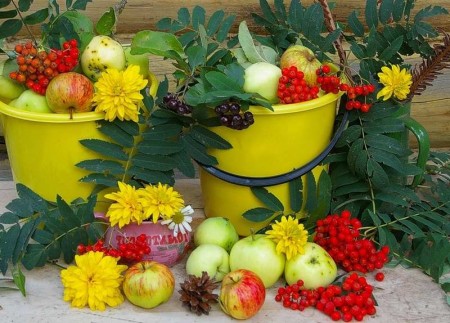
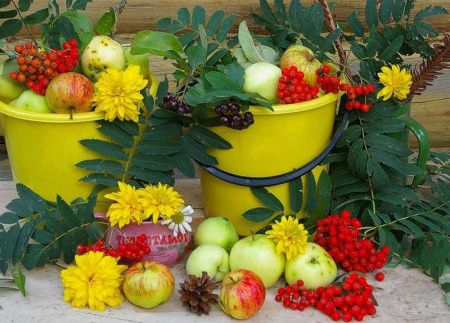
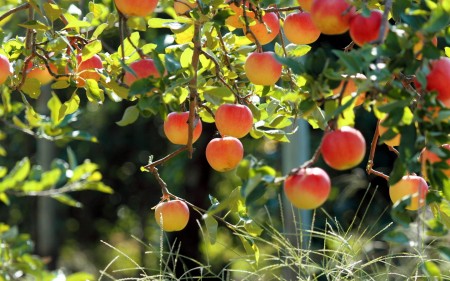
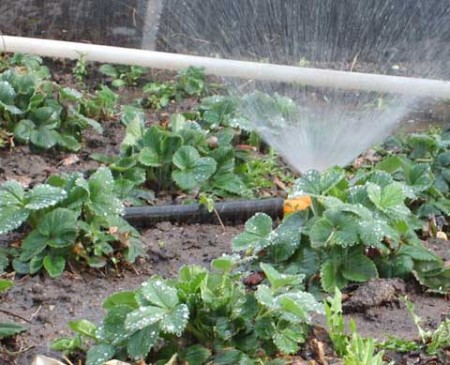
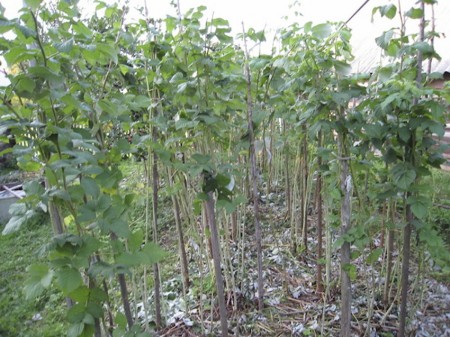
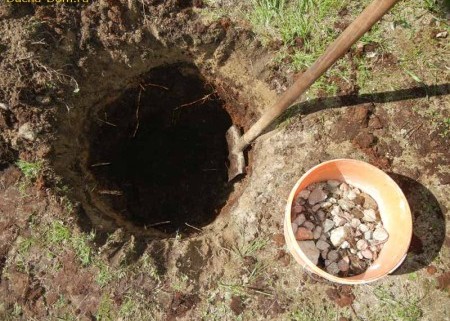
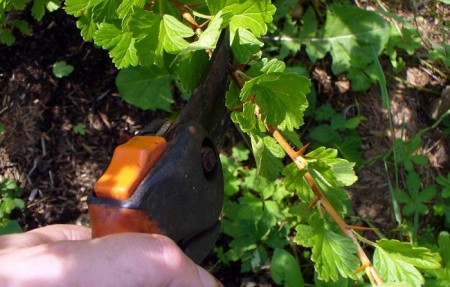
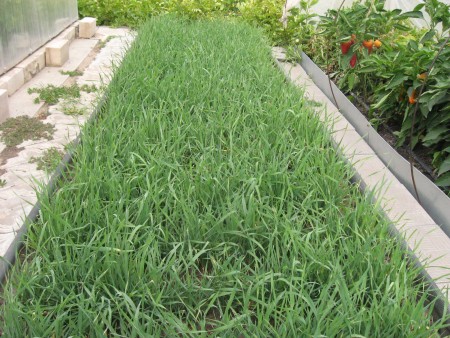
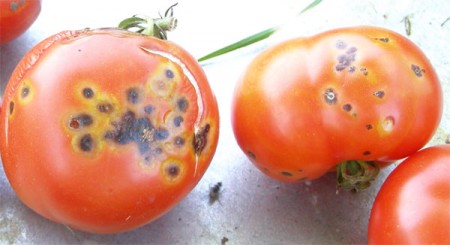
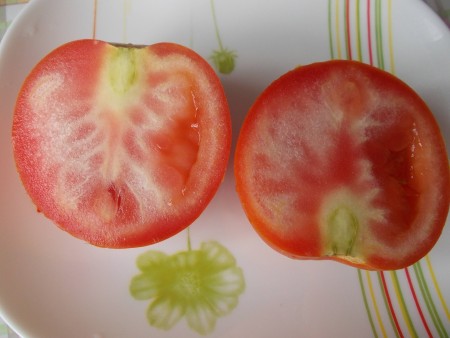
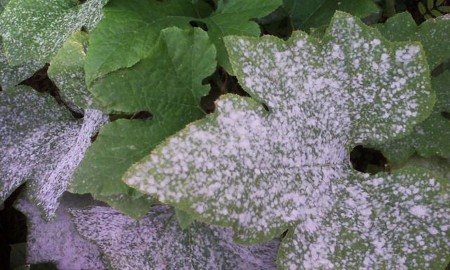
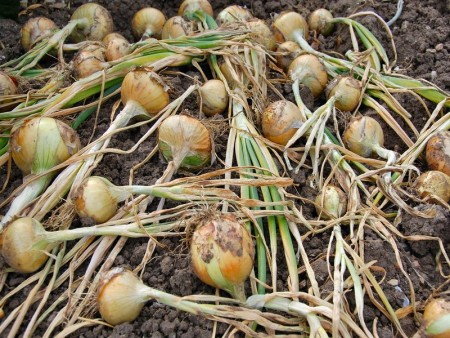


 (12 ratings, average: 4,67 out of 5)
(12 ratings, average: 4,67 out of 5) CUCUMBERS NEVER GET SICK, I'VE BEEN USING ONLY THIS FOR 40 YEARS! I SHARE A SECRET WITH YOU, CUCUMBERS ARE LIKE THE PICTURE!
CUCUMBERS NEVER GET SICK, I'VE BEEN USING ONLY THIS FOR 40 YEARS! I SHARE A SECRET WITH YOU, CUCUMBERS ARE LIKE THE PICTURE! You can dig a bucket of potatoes from each bush. Do you think these are fairy tales? Watch the video
You can dig a bucket of potatoes from each bush. Do you think these are fairy tales? Watch the video
 How our fellow gardeners work in Korea. There is a lot to learn and just fun to watch.
How our fellow gardeners work in Korea. There is a lot to learn and just fun to watch. Eye trainer. The author claims that with daily viewing, vision is restored. They don't charge money for views.
Eye trainer. The author claims that with daily viewing, vision is restored. They don't charge money for views. A 3-ingredient cake recipe in 30 minutes is better than Napoleon. Simple and very tasty.
A 3-ingredient cake recipe in 30 minutes is better than Napoleon. Simple and very tasty. Therapeutic exercises for cervical osteochondrosis. A complete set of exercises.
Therapeutic exercises for cervical osteochondrosis. A complete set of exercises. Which indoor plants match your zodiac sign?
Which indoor plants match your zodiac sign? What about them? Excursion to German dachas.
What about them? Excursion to German dachas.